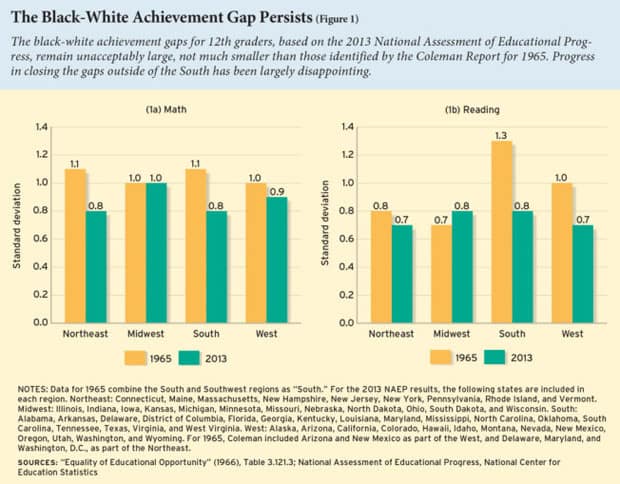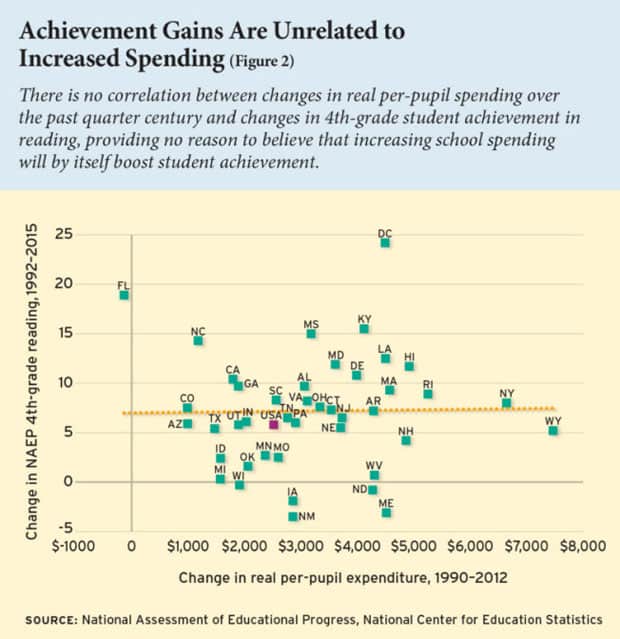Achievement Gap Between White and Black Students Still Gaping
Lauren Camera, US News, January 13, 2016
The achievement gap between white students and black students has barely narrowed over the last 50 years, despite nearly a half century of supposed progress in race relations and an increased emphasis on closing such academic discrepancies between groups of students.
That’s the finding that a new analysis of a landmark education report calls a “national embarrassment.”
“It’s remarkable,” says Eric Hanushek, senior fellow at the Hoover Institution at Stanford University and research associate at the National Bureau of Economic Research, who authored the analysis. “I knew that the gap hadn’t been closing too much, but when I actually looked at the data I was myself surprised.”
The finding is part of a series from Education Next commemorating the 50th anniversary of “Equality of Education Opportunity,” also known as the Coleman Report, a breakthrough report on education equity written by James Coleman, then a sociologist at Johns Hopkins University in Baltimore.
{snip}
The Coleman Report found, among many other things, that in both math and reading the average black student in grade 12 placed in the 13th percentile of the score distribution, meaning that 87 percent of white students in grade 12 scored ahead of the average black 12th grader.
But 50 years later, that gap has barely narrowed, Hanushek’s analysis shows. The average 12th grade black student, according to data from the 2013 National Assessment for Educational Progress, placed only in the 19th percentile. In reading, the achievement gap has improved slightly more than in math, but after a half century, the average black student scores at just the 22nd percentile.
{snip}

The largest gains in both math and reading were found in the Southern states, where the larger gaps observed in 1965 were brought in line with the rest of the nation by 2013, Hanushek’s analysis shows. {snip}
He estimates that if the achievement gaps continue close at such an incremental rate, it will be roughly two and a half centuries before the black-white math gap closes and over one and a half centuries until the reading gap closes.
“If [the Coleman Report] was expected to mobilize the resources of the nation’s schools in pursuit of racial equity, it undoubtedly failed to achieve its objective,” Hanushek wrote. “Nor did it increase the overall level of performance of high school students on the eve of their graduation, despite the vast increase in resources that would be committed to education over the ensuing five decades.”

{snip}















